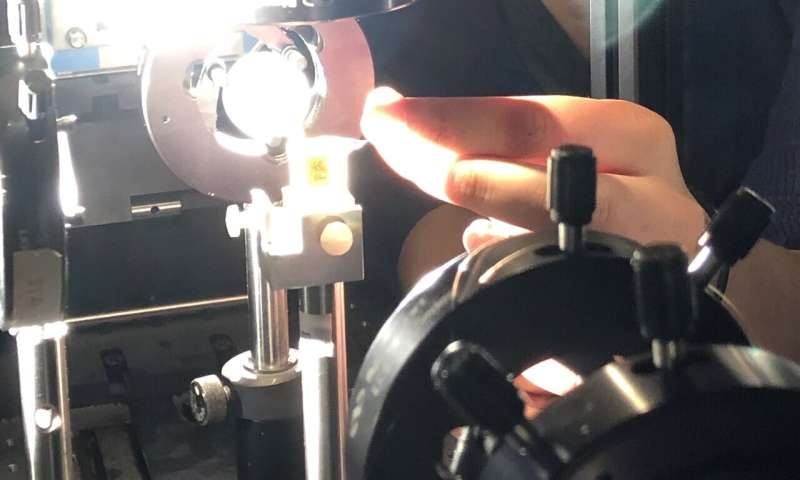Researchers perform simple calculations by shining light patterns through a translucent cube

McMaster researchers have developed a simple and highly novel form of computing by shining patterned bands of light and shadow through different facets of a polymer cube and reading the combined results that emerge.
The material in the cube reads and reacts intuitively to the light in much the same way a plant would turn to the sun, or a cuttlefish would change the color of its skin.
The researchers are graduate students in chemistry supervised by Kalaichelvi Saravanamuttu, an associate professor of chemistry and chemical biology whose lab focuses on ideas inspired by natural biological systems.
The researchers were able to use their new process to perform simple addition and subtraction questions.
"These are autonomous materials that respond to stimuli and do intelligent operations," says Saravanamuttu. "We're very excited to be able to do addition and subtraction this way, and we are thinking of ways to do other computational functions."
The researchers' work, published today in the journal Nature Communications, represents a completely new form of computing, one they say holds the promise of complex and useful functions yet to be imagined, possibly organized along the structures of neural networks.
The form of computing is highly localized, needs no power source and operates completely within the visible spectrum.
The technology is part of a branch of chemistry called nonlinear dynamics, and uses materials designed and manufactured to produce specific reactions to light.
A researcher shines layered stripes of light through the top and sides of a tiny, glass case holding the amber-coloured polymer, itself roughly the size of a die used in a board game. The polymer starts as a liquid and transforms to a gel in reaction to the light.
A neutral carrier beam passes through the cube from the back, toward a camera that reads the results, as refracted by the material in the cube, whose components form spontaneously into thousands of filaments that react to the patterns of light to produce a new three-dimensional pattern that expresses the outcome.
"We don't want to compete with existing computing technologies," says co-author Fariha Mahmood, a master's student in chemistry. "We're trying to build materials with more intelligent, sophisticated responses."
More information: Nature Communications (2019). DOI: 10.1038/s41467-019-10166-4
Journal information: Nature Communications
Provided by McMaster University


















